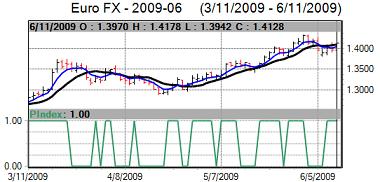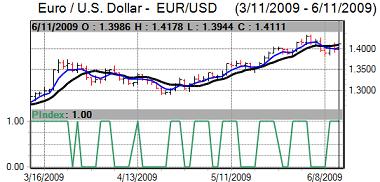Currency markets struggled for direction for much of the week with rallies quickly attracting selling pressure as moves struggled to gain any momentum. Overall dollar sentiment was still generally fragile which certainly limited support with only fragile support near recent trade-weighted lows.
As far as the US data is concerned, both headline and core retail sales rose 0.5% in May after revised 0.2% declines the previous month. Much of the increase did, however, reflect higher prices, notably for energy, rather than any spending increase. The rise in building material sales did have some positive impact on confidence.
Initial jobless claims fell to 601,000 in the latest week from 625,000 previously, although the number of continuing claims rose sharply to a fresh high of 6.82mn, dampening the optimism sparked by last week’s decline in continuing claims.
Markets were still struggling for direction with conflicting analysis over the impact of higher Treasury bond yields as there were mixed auction results.
The US trade deficit widened to US$29.2bn for April from a revised US$28.5bn the previous month. Exports fell by a further 2.3% in April to give a 21.8% annual decline for shipments while imports fell by 30.4%. Although the data is for two months ago, the data reinforced fears over the slump in trade values and this curbed the underlying improvement in risk appetite.
The Beige Book remained generally downbeat over prospects, although 5 of the 12 Fed districts reported that the pace of deterioration is slowing.
The Euro gained initial support from comments from Russian official comments that it would buy IMF bonds and diversify away from dollar. French officials also stated that is was unlikely that exchange rates would be discussed at the weekend G8 meetings which dampened expectations of official resistance to Euro gains and this pushed the currency higher.
In contrast, there was downward pressure on the currency following a second downgrading of the Irish credit rating by Standard & Poor’s which reinforced unease over the Euro-zone debt situation and risk of further internal stresses.

Source: VantagePoint Intermarket Analysis Software
Call now and you will be provided with FREE recent forecasts
that are up to 80% accurate. 800-732-5407
If you would rather have the recent forecasts sent to you, please go here.
The Euro-zone data recorded an improvement in business confidence and no change for German factory orders which did not have a major impact. German exports declined in the latest data while industrial production fell by a much sharper than expected 1.9% for April.
The immediate fears surrounding a currency devaluation in Latvia eased following remarks from the government that a devaluation was out of the question. This, in turn, eased fears over the European banking sector and helped support the Euro, but there was still a high degree of uncertainty which limited any positive impact.

Source: VantagePoint Intermarket Analysis Software
Call now and you will be provided with FREE recent forecasts
that are up to 80% accurate. 800-732-5407
If you would rather have the recent forecasts sent to you, please go here.
The Euro consolidated close to 1.40 against the dollar after failing to hold above 1.41 while there was some downward pressure on individual crosses, notably against Sterling.
The dollar and yen were confined to generally narrow ranges during the week with both currencies tending to lose support in tandem as international risk appetite improved. The dollar struggled to move much above the 98 region.
The Nikkei index was able to reach an 8-month high on firm international sentiment and the yen remained vulnerable to some underlying capital outflows. The latest capital account data continued to record net outflows from Japan as domestic investors looked to push funds into high-yield assets, especially with the Australian employment data was stronger than expected. The Australian dollar pushed to highs above 0.82 against the US currency before a renewed retreat.
Underlying confidence in the UK economy remained stronger following the recent run of favourable data. Although the underlying fundamentals are still weak there has been additional protection from weak performances elsewhere in the global economy. In particular, doubts over the Euro-zone outlook provided Sterling support
The latest economic data recorded a small increase in April manufacturing production which was the first rise for 14 months. The NIESR institute recorded a 0.9% GDP decline in the three months to May, but stated that the economy could register growth for the second quarter as a whole which reinforced optimism over near-term trends.
The RICS registered that less than half of property surveyors reported lower house prices in May. The latest BRC retail sales survey registered an annual decline, although the series is volatile and markets tended to concentrate on the housing data.
Sterling initially fell against major currencies early in the week, but then secured renewed gains as underlying sentiment remained strong. The currency pushed back to challenge the 1.66 region against the dollar before hitting tough resistance and also hit 2009 highs against the Euro near 0.85.



